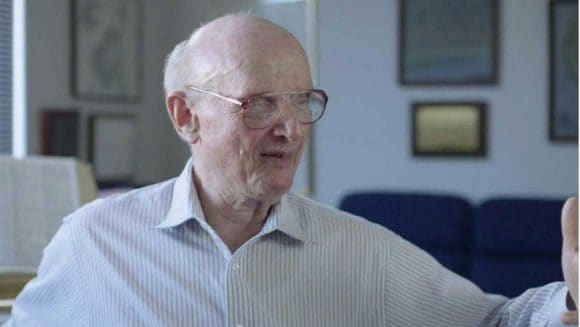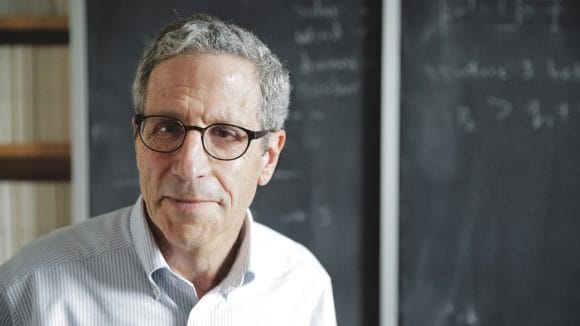When a gentleman appears at the doorstep of a house in Cape Cod on a warm day in early spring looking for a summer rental, it might be that he’s simply interested in a rental. It might also be that he’s an economist in the middle of an in-depth experiment, attempting to understand the search process in the rental market. Or, it might be Peter Diamond doing both things at once, a combination that would lay the foundation for his Nobel Prize winning work decades later in 2010.

Peter A. Diamond
The Sveriges Riksbank Prize in Economic Sciences in Memory of Alfred Nobel, 2010
Optimal Taxation: Research with Impact
Optimal Taxation: Research with Impact
His research contributions are numerous and extend far beyond economics. Diamond’s work on optimal taxation with James Mirrlees, a fellow Nobel Laureate, modernized the field of public economics. In the field of policy making, his investigation of pensions helped to reform the US system, and moreover, was used to design the Polish pension system from scratch.
A realistic approach to economic markets
Has this question inspired you?
Get the latest Nobel perspectives delivered to you.
The importance of bringing economics and politics together
The importance of bringing economics and politics together
"For me, policy and basic research have a very strong back and forth," says Diamond in his sunlit office at MIT, his Alma Mater and employer since 1966. "I was looking at basic research as information input into policy analysis. I then used policy analysis to identify questions that would have really interesting answers. Research is about not just answering a question, but answering questions that are truly interesting and useful."
Diamond’s methods for understanding socioeconomic processes have set him apart from other theoretical economists. After mulling over a question, Diamond generates an array of ideas for modeling the problem and finding solutions. But he doesn’t stop there, because what drives him is the issue’s practical relevance. No wonder his former colleague at MIT and friend Nobel Laureate, Eric Maskin, calls Diamond an “application-oriented theorist.”
When I work on a new piece of theory, I often begin by finding a concrete example I want to explore. And then I look for a way of thinking about it that has a chance of being more general, more broadly applicable.
The challenge of a lifetime: pension systems
Expanding your horizon by going to law school
Expanding your horizon by going to law school
Economic modeling is merely an instrument to help find solutions, theoretical models aren’t a solution in themselves, nor do they imply practical applicability. He takes issue with academia in general by saying that “Too much of the profession tends to take models literally, rather than saying 'What have I learned from this? How does it affect how I think about this or that?’”
Head of the Department of Economics at MIT and colleague James Poterba says that some of Diamond’s most exciting research has evolved from his teaching. Not only does he aim to grasp the essence of a problem, he wants to get to the core of it and think like an insider. For instance, when the question of how laws and regulations affect economic problems stirred his curiosity, he enrolled in courses at the Harvard Law School. He attended classes and completed the exams like any other student. This in-depth approach allowed him to think about his research problem from a lawyer’s perspective.
What's crucial when creating a sustainable pension system?
What's crucial when creating a sustainable pension system?
Accompanying Diamond to a weekly student and faculty lunch meeting shows how much Diamond sees research as a collective activity. In an informal space, students and faculty members regularly mingle and discuss their work over a meal. But when it comes to giving advice, he prefers to take a back seat.
When students come to me and ask for general advice about getting started on a thesis or pursuing a question, I begin by saying 'I don’t give advice.' I don’t do that because the cutting edge always belongs with young people.
How can a pension system include the young and self-employed?
Diamond has spent a lot of time working on how to create pension systems that work for all generations. Back in 1972, he was asked to help reform the US social security system. Congress believed it was heading for bankruptcy and that previous reforms had contained serious mistakes.
“One of the difficulties in running a pension system is the diversity of experience in the economy,” Diamond explains. “A system that’s addressing all of the issues will be worrying about poverty, about high-risk workers and families, too.”
He emphasizes how important it is to design a system for everyone, but that systems at the same time will always be subject to many different risks.
Who knows how life expectancy will grow, how labor force will grow, how well wages will keep up or rise faster than inflation?
What makes a good pension system?
Has this question inspired you?
Get the latest Nobel perspectives delivered to you.
Putting theories into practice
Putting theories into practice
Academics commonly live somewhat nomadic lifestyles, their job can take them to far away, exotic places. Diamond and his wife, Kate Myrick, got a taste of academic wanderlust during his sabbatical years in Nairobi, Tel Aviv and Cambridge. Since that time, they chose to settle in the Boston area which they now call home. "Home is where I want to come back to, where I unwind and connect, not just with family but with my sense of the world, because then I can step back and think about things," he says.
Having a strong connection to home and family has helped Diamond excel in academics and policy formations, as well as granting him the opportunity to contribute to his own community. He and his wife have both been elected to the local legislature where they live. As a public finance economist, Diamond had a good grasp of the basics of public finances and he ran a successful campaign to increase tax revenue to meet the town’s budget.
When it was time for his second term, he chose an unorthodox message to appeal to voters in his small constituency. “When I was running for election after my wife had been elected,” he says. “I said to the voters that if you care about family values, they should vote for me because that would mean I would be with my wife, and that's a very serious family value.”
The laureate only half-jokes, revealing that admirable ability not to take himself too seriously.
Why do countries have to find better ways to grow?
Hear Michael Spence's view on how countries can grow sustainably while having a long-lasting positive impact.
More Nobel Laureate stories
Get new questions as they launch
Get new questions as they launch
Has this question inspired you?
Get the latest Nobel Perspectives updates delivered to you.




